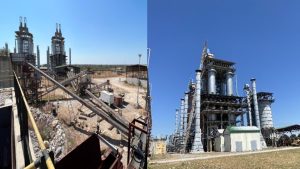A subtle shift is unfolding in the byways of healthcare property, inviting a reassessment of how investors gauge value. Beneath the familiar veneer of waiting rooms and consultation suites, an intriguing narrative is taking shape, one that challenges conventional wisdom on real estate’s role in balancing risk and return.
The contours of demand are redrawing themselves as demographic patterns exert unprecedented pressure on medical infrastructure. An ageing population is not merely increasing the volume of doctor visits; it is reshaping the very geography of care. Suburban centres that once struggled to attract conventional retail or office tenants are now proving fertile ground for ambulatory clinics and allied health services. In city fringes, longstanding commercial hubs are being repurposed to accommodate specialist practices, creating a dynamic interplay between community needs and property utilisation. Against this backdrop, long leases with credible tenants, often underpinned by government or healthcare group support, have begun to emerge as a powerful defensive ballast against economic cycles.
Investor interest is swelling in parallel with these shifts. The blueprint is straightforward: secure properties that house essential services, negotiate leases that align with inflation or operating cost indices, and benefit from the stickiness of healthcare operators whose relocation or closure involve significant disruption. Far from a rallying cry about headline yields, the opportunity resides in the durability of income streams and the latent upside of strategic repurposing. As consumer tastes ebb and flow in retail or office markets, medical occupiers demonstrate remarkable resilience, anchored by regulatory frameworks and long-term patient relationships.
The capital-intensive nature of clinical fit-outs further compounds this resilience. When a tenant commits to suction units, X-ray rooms or specialised HVAC systems, they signal a degree of permanence that few other commercial users can match. From an investor’s perspective, such customisation translates into enhanced tenant retention and the prospect of recovering fit-out costs through renewals or new tenancy agreements. Over time, as ageing cohorts require more frequent and complex treatments, demand for spaces designed to accommodate evolving technologies and specialist care will only intensify. This trajectory bodes well for portfolios positioned to capture both the baseline income and the reversionary potential inherent in lease expiries.
Yet opportunity in medical real estate extends beyond traditional clinics. Urgent care hubs, diagnostic centres and rehabilitation facilities are carving out niches in the broader care continuum. Each represents a distinct risk-return profile, driven by factors such as patient volumes, referral networks and reimbursement models. Investors attuned to these nuances can calibrate exposures, balancing stable tenancy against pockets of growth where emerging care delivery models are gaining traction. The virtuous cycle of capital investment is evident: modern, well-located facilities attract leading practitioners, who in turn deliver outcomes that drive patient demand and underpin property values.
Inflation protection, often cited as a hallmark of quality property assets, attains additional rigour in this sector. Rental agreements frequently incorporate escalators linked to consumer price indices or specific healthcare cost measures, ensuring that cash flows keep pace with broader cost pressures. At a time when interest rate volatility looms large, such indexed income can serve as a ballast within diversified portfolios, tempering fluctuations elsewhere. Moreover, the essential nature of medical services reduces vacancy risk; even in downturns, healthcare remains a non-discretionary habit.
Location strategy likewise assumes renewed prominence. Proximity to hospitals, aged-care facilities and burgeoning residential precincts can create synergies that elevate occupancy and drive rental growth. In metropolitan fringes where greenfield development has previously dominated, planning authorities are now more receptive to mixed-use precincts that integrate healthcare into community hubs. For investors, this evolution offers a window to engage early in precinct-scale planning, securing parcels at attractive pre-development pricing before catalytic public-private infrastructure partnerships come on stream.
However, success in this domain demands more than financial acumen; it calls for an appreciation of regulatory intricacies and healthcare-specific operational considerations. From compliance with sterile environment standards to understanding patient privacy requirements, effective asset management hinges on close collaboration with specialised property advisers and clinical operators. When executed well, this partnership model not only safeguards income but can enhance patient experience, creating positive feedback loops that reinforce long-term asset value.
Physicians Capital are the only physicians-owned private real estate investment firm that allows doctors to reclaim ownership, generate passive income and build long-term wealth.












































